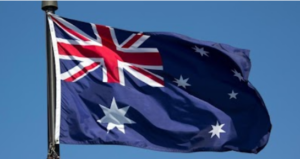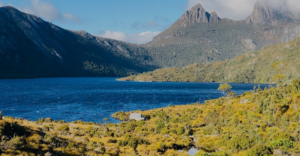Some information about Australia.
Australia(Some information about Australia)
Quick Facts
See article: flag of Australia
Head Of Government: Prime Minister: Anthony Albanese
Capital: Canberra
Population: (2025 est.) 27,978,000
Currency Exchange Rate: 1 USD equals 1.535 Australian dollar
Head Of State: British Monarch: King Charles III, represented by Governor-General: Sam Mostyn.
Australia, the smallest continent and one of the largest countries on Earth, lying between the Pacific and Indian oceans in the Southern Hemisphere. Australia’s capital is Canberra, located in the southeast between the larger and more important economic and cultural centres of Sydney and Melbourne.
The Australian mainland extends from west to east for nearly 2,500 miles (4,000 km) and from Cape York Peninsula in the northeast to Wilsons Promontory in the southeast for nearly 2,000 miles (3,200 km). To the south, Australian jurisdiction extends a further 310 miles (500 km) to the southern extremity of the island of Tasmania, and in the north it extends to the southern shores of Papua New Guinea. Australia is separated from Indonesia to the northwest by the Timor and Arafura seas, from Papua New Guinea to the northeast by the Coral Sea and the Torres Strait, from the Coral Sea Islands Territory by the Great Barrier Reef, from New Zealand to the southeast by the Tasman Sea, and from Antarctica in the far south by the Indian Ocean.
Some information about Australia it has been called “the Oldest Continent,” “the Last of Lands,” and “the Last Frontier.” Those descriptions typify the world’s fascination with Australia, but they are somewhat unsatisfactory. In simple physical terms, the age of much of the continent is certainly impressive—most of the rocks providing the foundation of Australian landforms were formed during Precambrian and Paleozoic time (some 4.6 billion to 252 million years ago)—but the ages of the cores of all the continents are approximately the same. On the other hand, whereas the landscape history of extensive areas in Europe and North America has been profoundly influenced by events and processes that occurred since late in the last Ice Age—roughly the past 25,000 years—in Australia scientists use a more extensive timescale that takes into account the great antiquity of the continent’s landscape.
Australia is the last of lands only in the sense that it was the last continent, apart from Antarctica, to be explored by Europeans. At least 60,000 years before European explorers sailed into the South Pacific, the first Aboriginal explorers had arrived from Asia, and by 20,000 years ago they had spread throughout the mainland and its chief island outlier, Tasmania. When Captain Arthur Phillip of the British Royal Navy landed with the First Fleet at Botany Bay in 1788, there may have been between 250,000 and 500,000 Aboriginals, though some estimates are much higher. Largely nomadic hunters and gatherers, the Aboriginals had already transformed the primeval landscape, principally by the use of fire, and, contrary to common European perceptions, they had established robust, semipermanent settlements in well-favoured localities.
Dove Lake, Tasmania, Australia

Dove Lake,
Tasmania, AustraliaDove Lake in Cradle Mountain–Lake St. Clair National Park, Tasmania, Some information about Australia.
The American-style concept of a national “frontier” moving outward along a line of settlement is also inappropriate. There was, rather, a series of comparatively independent expansions from the margins of the various colonies, which were not joined in an independent federated union until 1901. Frontier metaphors were long employed to suggest the existence of yet another extension of Europe and especially of an outpost of Anglo-Celtic culture in the distant “antipodes.
The Australian Heritage Commission Act of 1975 established a federal agency to develop interest in a National Estate of listed places. The UNESCO list of World Heritage sites carries more political and legal weight, and areas so classified have been protected by the federal governments in the face of furious opposition from their state partners. Some 20 Australian landmarks, representing every state and territory, have been added to the list, including the Great Barrier Reef, the Blue Mountains area, Kakadu National Park, Shark Bay, Uluru–Kata Tjuta National Park (which contains the great red mass of Uluru/Ayers Rock, a sacred site of Aboriginal peoples), rainforest reserves in central-eastern Australia, the Tasmanian Wilderness, and fossil mammal sites at Riversleigh and Naracoorte. Territorial disputes have arisen over proposals for the Great Barrier Reef and natural rainforest enclaves in Queensland and Tasmania
